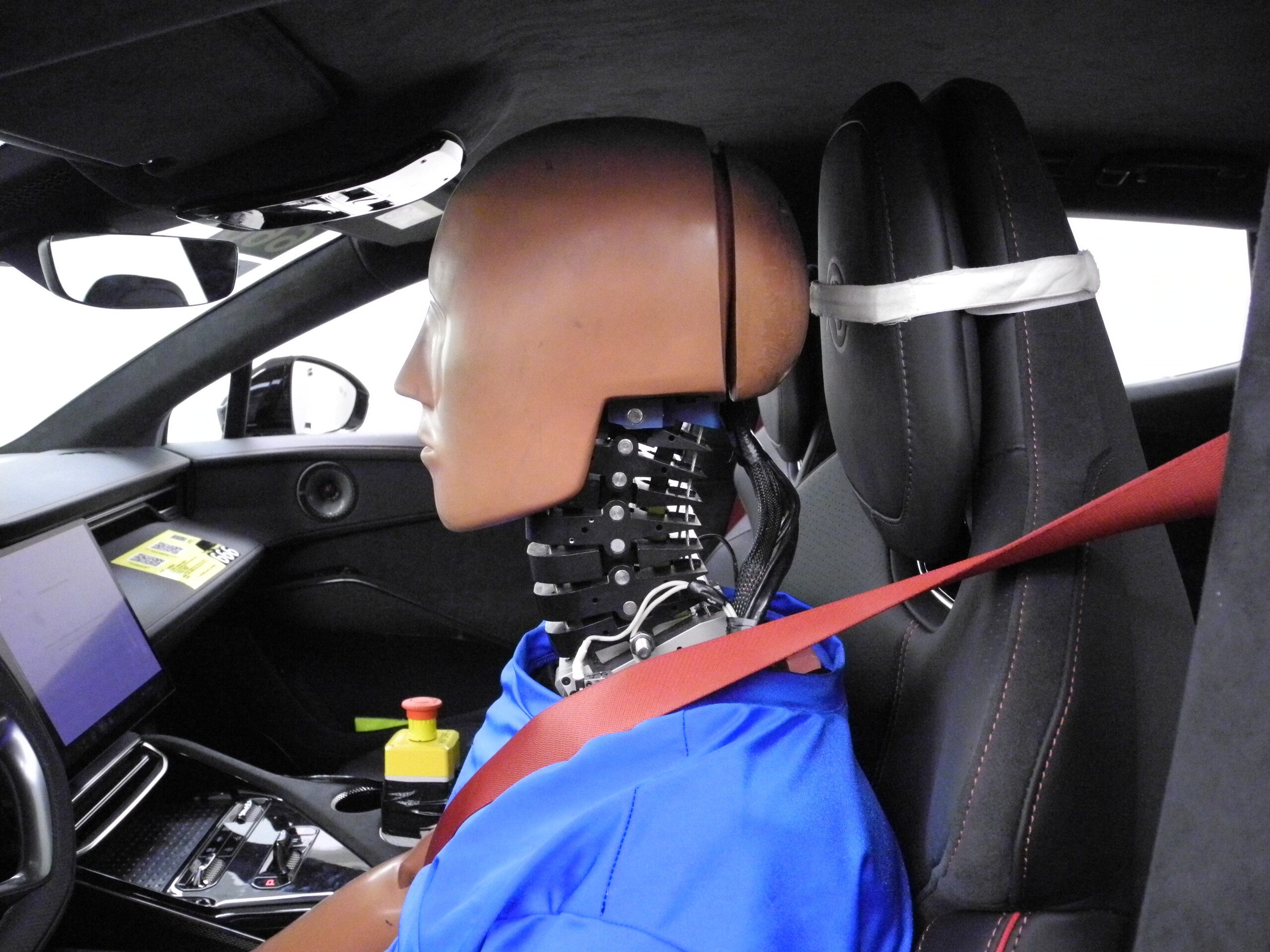Topics at the Allianz Center for Technology:
Performance of new-brand vehicles in RCAR tests with emphasis on seat protection potential and damage patterns

December 2023
For this reason, the AZT investigated two questions:
1. what is the protection potential of the vehicle seats in these vehicles in light rear-end collisions?
2. how high are the damages of these vehicles compared to traditional manufacturers on the German market?
Despite good seats with a high protection potential, an above-average deformation after the accident can cause the impact-induced change in speed to be calculated too high by the expert and thus the risk of injury for the occupants to be assessed as too high.
RCAR, community of insurance-related research centers, established, among other things, uniform crash tests for risk assessment of new vehicle models and the International Insurers Whiplash Prevention Group (IIWPG). AZT Automotive GmbH (AZT) has been a very active part of this community from the beginning. In collaboration with other insurers, physicians, biomechanics, engineers and universities, a special rear impact dummy, the BioRID II, was developed and a dynamic test with appropriate evaluation criteria for seat structures was introduced in 2004
Since then, the protection potential of vehicle seats in Europe has steadily increased. However, with the increasing prosperity in the Asian region, the issue and the handling of neck distortion claims has also come to the fore in the countries there. But the topic is also becoming interesting again in the European market, as more and more new and especially Chinese vehicle manufacturers are entering the markets. This raises the questions of what protection potential their vehicle seats offer and what deformation behavior the models exhibit in light rear impacts.
The AZT had the opportunity to test the protection potential of driver seats with a BioRID II as well as the structural behavior of the vehicle body in some of these new-brand models as part of the tests for the German type class rating and to compare them with the values of the established manufacturers in Europe. The result is presented in anonymized form. The Paper is available here.
The RCAR-IIWPG has also published a paper summarizing the research and results to date on international whiplash research. According to this paper, a calculation of the impact-induced change of velocity (delta-v) based on the damage patterns remains one of the bases for a plausibility check of claims.
This raises the need to analyze whether new vehicle models show different damage patterns than would be expected from previous experience at a given speed.